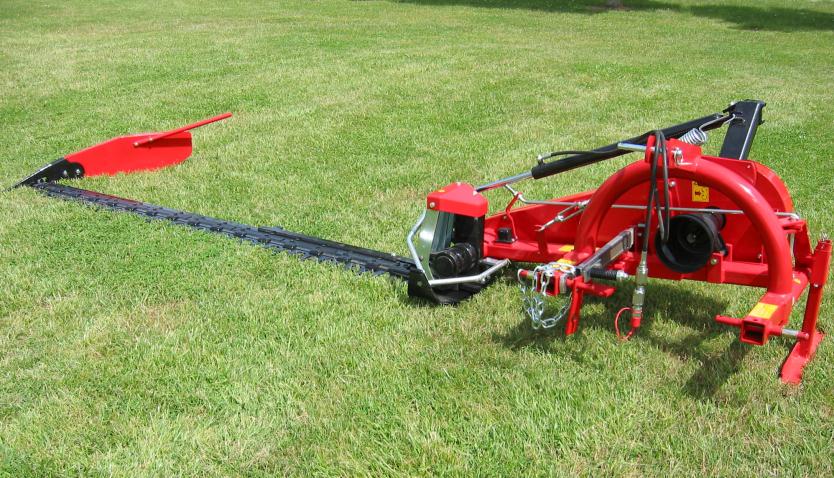Lesson Outline
 Deana Namuth-Covert
Deana Namuth-Covert
Professor, Director of Online Education and Outreach, The Ohio State University; Agronomy & Horticulture Adjunct Professor, University of Nebraska
dcovert2@unl.edu
Harvest Unit Activity
ViewTiller Growth Camtasia
View
Field Operations for Harvesting Herbaceous Bioenergy Crops:
Mowing and Conditioning
Sickle Bar Mowers
Sickle cutterbar mowers have been the traditional forage harvesting equipment which cut by means of shearing force using reciprocating knives. Double knife cutterbars (Figure 2) have the advantage of a dynamic balance achieved by having two exactly similar knives reciprocate in opposite directions thereby generating less vibration than single knife cutterbars. Sickle cutterbar mowers require frequent maintenance because of the high number of moving parts and vibrations.
Low power requirement and weight are the major advantages of sickle cutterbars such machines requiring a tractor power of as low as 12 hp for a 4 ft. working width and around 45 hp for an 8 ft. wide mower. Working speed is often less than 5 mph depending on the crop density. Limited ground speed and subsequent low productivity are the major disadvantages of these machines. The cutterbar rides on skid shoes on the ground and the cut height can be adjusted by adjusting the skid position relative to the frame.
These mowers do not perform well in high yielding fields and are particularly inefficient for harvest of tall prairie grasses like switchgrass. This is because sickle cutterbar mowers tend to clog up under high yielding grasses and ground speed has to be significantly reduced in such conditions leading to significantly reduced productivity. This effectively rules out sickle cutterbar mowers for high-yielding bioenergy crop harvest.
Figure 2. Left: A single knife cutterbar mower
Right: Double knife reciprocating cutterbar with guards (ESM).
Figure 3. Mounted sickle bar mower (Belco Resources). Low power requirement and high maintenance due to high number of moving parts are features of a sickle bar mower.
|
Question 1: What are the two main disadvantages of using cutter-bar mowers to cut grasses?
|
|
Question 2: How is cut height of sickle cutterbar mowers adjusted?
|
|
Question 3: What is one advantage of sickle bar mowers?
|

 Deana Namuth-Covert
Deana Namuth-Covert



Comments